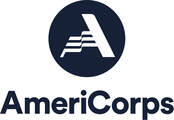|
Beginning a service year in September 2020, in the height of a COVID-19 uncertain world, was a challenge. Having served a year as an AmeriCorps previously, part of my service that I loved was getting immersed in a community and connecting with folks on a face level. Serving with the West Virginia Association of Museums (WVAM), I was excited to get to know museum and art professionals from around the state and explore sites that were beyond my Mountaineer Country-centric world. The big yearly gathering for WVAM is the annual conference, which is held in a different West Virginia town each year. This conference is a time for museum workers around the state to network, grow professionally, and also to relax and get to know their colleagues at other sites. By the time I started my service, the 2020 conference had been cancelled and 2021 was up in the air. It was eventually decided that the safest course of action would be to host our annual conference virtually, much like a lot of other events around the country. This was unchartered territory for all of us at WVAM. We had to figure out the technical aspects, while also crafting a virtual experience that would still be worthwhile and engaging for our members and other professionals. We had to cancel some fun aspects of previous conferences - like the annual banquet and raffle dinner, and the pre-conference excursions to local museums and cultural sites. Altogether, we were able to craft educational and social sessions throughout the week of March 22nd-26th, ranging in topics including grant writing, public arts, paper conservation, black COVID-19’s impact on museums in West Virginia, and more. One of my favorite sessions of the week was the session hosted by Black in Appalachia. I’ve admired their organization and the important work they do, and it was a great opportunity to work with them and bring them to a virtual audience in West Virginia that is equally excited about the work they’re doing. I also really enjoyed one of the social sessions I led, the “Artifact Show & Tell.” We wanted to replace some of the networking and socializing opportunities that are normally present at a conference with light-hearted evening social sessions. While it was a bit awkward at first to adjust to a virtual format, the show and tell session ended up being a fun way for art and history nerds to show off items in their personal collection or at work that they find fascinating, weird, or just plain interesting. After the conference was over, we sent out a survey and collected feedback to see how the conference was received by the attendees. From the responses we got, most folks were very pleased with the conference, which was a huge relief. Here’s some comments that we received: “I appreciated the great variety of sessions and that they were strung out over a week, which made it easier to work into my busy schedule. I also liked the social activities--it is what I miss most about conferences.” “It was much easier for me to access because it was virtual. I would not have been able to attend an in-person conference. It tends to be too far from the Eastern Panhandle.” “I attended multiple sessions for the West Virginia Association of Museums Virtual Conference and enjoyed them all, but 'Black Narratives, Exhibition, and Engagement' stood out in particular. The erasure of Black histories in Appalachia makes researching, understanding, and interpreting sites associated with Black communities difficult. The resident-driven work that Black in Appalachia does is remarkable” “This year's WVAM conference was a great mix of practically and theoretically based sessions that helped to round out my current studies at WVU and my continuing field work outside of the classroom.” Planning and organizing this conference was a lot, but it was a relief to see the feedback and know that folks enjoyed and benefited from it. Personally, it was a great learning experience for me to see what goes on behind the scenes at a large event like this - marketing, session planning, schedule coordinating, and registration - it can be a lot. Add on top of that technical issues, and things can get a little hectic. Although COVID-19 forced our hand into hosting a virtual event, I think there are a lot of benefits to virtual gatherings that we discovered. It can be easier and more accessible for folks to attend due to costs and the time commitment, and we were able to invite speakers from outside of the state that maybe wouldn’t have been able to attend an in-person one. Although my service year is ending with WVAM, I am looking forward to following how the 2022 conference (which might be in-person!) develops and hopefully will be able to attend myself. LAUREN GRIFFINLauren served as a Preserve WV AmeriCorps member for the West Virginia Association of Museums during the 2020-2021 service year. Preserve WV AmeriCorps tells the story of two historic churches through new interpretive signs9/15/2021
The Monroe County Historical Society was awarded a grant from the West Virginia Humanities Council for the creation and installation of interpretive signs for the two historic church buildings owned by the society in Union. Both buildings have undergone extensive repairs over the past two decades. Ames Clair Hall, formerly the Ames Methodist Episcopal Church, is available for use as a performance and meeting space. The First Baptist Church building still requires extensive repairs before it can opened to the public. Both of these churches were originally built for the white congregations and after the Civil War were purchased by the African-American members of the congregation. One man, James Clair, and his descendants were instrumental to the formation and success of both the Baptist and Methodist congregations and these churches. James Clair was baptized into membership at the First Baptist Church in Union in 1868. His family remained active in the community. His son, James Clair Jr. was also baptized into the First Baptist Church. His grandson, Matthew Clair, became one of the first two African-American bishops of the Methodist Church. The slave James Clair was born in 1810 and was purchased in Richmond Virginia by the owners of the Salt Sulphur Springs resort to work at this resort in Monroe County. While the owners of the resort rode horses back to Monroe County, the slaves had to walk about two hundred miles to the “Salt”. Mrs. Kate Clair, a daughter-in-law, relates that the slaves were guided on their journey by forked sticks placed at the forks in the road to indicate which way their owners had taken. Generations of church members have worshipped in these two historic churches. Both buildings were deeded to the Historical Society after membership declined. Justine Nall, of Union, got the project started. Her father, Russell Newsome played the organ for services when Ames Clair Hall was the Ames Memorial Methodist Church. Marilyn Adamson provided information about the First Baptist Church where she, her great-grandmother, grandmother, and parents worshipped. Photos show the interpretive signs installed. The signs will help expand the knowledge of the buildings and the importance of the church community on the wider community for the people of Monroe County and surrounding areas. This project received financial assistance from the West Virginia Humanities Council, a state affiliate of the National Endowment for the Humanities. Any views, findings, conclusions, or recommendations do not necessarily represent those of the West Virginia Humanities Council or the National Endowment for the Humanities. Vernessa PontiusVernessa served as a Preserve WV AmeriCorps member with the Monroe County Historical Society in Union during the 2020-2021 service year. When starting the process to identify potential sites for a Historic Property Inventory (HPI) form I was able to work off another Preserve WV AmeriCorps member, Iain Mackay's work and that of another Preserve WV AmeriCorps member who had done some work compiling West Virginia Green Book sites and determining which were extant, demolished, or questionable. It took me a couple hours of searching to find possible sites to research. I knew of some sites in Jefferson County, but discovered that HPI forms existed for those and I decided to find a site closer to home so that I could go take pictures if needed. Using Google Maps and preliminary internet searches I could not solidly identify or find information on any of the possible Fairmont sites, so I moved my focus up to Morgantown to try again. My colleagues had already determined that two of the five Morgantown sites no longer existed, and the remaining three were all tourist homes (individual homes that would offer lodging). The three tourist homes in Morgantown were: “Okey Ogden—1046 College Ave,” “Mrs. Lizzie Mae Slaughter—3 Cayton Street,” and “Mrs. Jeanette O. Parker—2 Cayton Street.” Unfortunately, Google Maps is not great in that area and has no street view on Cayton Street, but I was able to determine that 1046 College Avenue did exist and real estate information indicated that the existing structure was the correct age to have been Okey Ogden’s Tourist Home in the 1950s. Next I turned to Ancestry to dig into the census records and find any information on Ogden. I could find him and his family in the census records between 1900 and 1940 in different homes in Morgantown, including the 1046 College Ave address starting on the 1930 census. I also discovered that Ogden was a veteran of World War I and served in the 542nd Engineers. This is where the process took its first turn. There are few records available in Ancestry or Fold3 connected to Okey Ogden’s military service. However, there was a digitized request form for his military headstone after his 1953 death (his grave and headstone are in East Oak Grove Cemetery in Morgantown, WV). The person who requested Ogden’s headstone was Mrs. Linnie M. Slaughter, the proprietor of the Green Book site at 3 Cayton Street. Somehow Slaughter and Odgen were connected. According to the scanned map cards digitized by the Monongalia County Assessor’s Office, Lizzie M. Slaughter acquired the plot for 1046 College Ave in 1953, the same year that Okey Ogden died. When I delved into the parcel maps and tax records for Cayton Street I discovered that Linnie M. Slaughter’s name was on all three plots of land, along with Jennette O. Parker. At this point I knew that all three structures were extant, expanding my project from one HPI form to three, and all three proprietors were connected in some way. The difficulty in connecting Ogden, Parker, and Slaughter together was the different last names. I knew that Slaughter and Ogden were directly connected because Slaughter had requested Ogden’s headstone. However, after about an hour of searching I could find no record of Slaughter’s marriage to Charles William Slaughter to determine her maiden name. The break-through came after switching to focus on Jennette O. Parker. In the tax map cards Parker was always listed together with Grace Edwards, who I determined was Parker’s daughter. By following Parker and Edwards backwards through the census records I determined that Linnie M. Slaughter’s maiden name was Edwards; Grace and Linnie Mae were sisters from Jennette Parker’s first marriage to Charles Edwards. Parker was her married name from her second marriage to Hartley Thomas Parker. I was able to trace Jennette Parker through her first marriage record to Edwards and discovered that her maiden name was Ogden. Jennette O. Parker was Okey Ogden’s sister. Considering how often Green Book sites are lost due to demolition, extensive changes, or poor documentation it was amazing to find this cluster of three extant sites all together and discover how they were all linked to members of the same family. Okey Ogden’s tourist home only operated between 1949 and 1952; these were the years between the death of his mother (who owned the home prior) and his own death in 1953. However, Jennette O. Parker and Linnie M. Slaughter continued to run their tourist homes into the 1960s when the final edition of the Green Book was published. As I continue to work on the HPIs I hope to dig further into local records to piece together more of the lives of this family that committed themselves to providing safe lodging for black travelers for more than a decade. Katie ThompsonDr. Katie Thompson is a Preserve WV AmeriCorps member serving with Clio during the 2020-2021 program year.
How do you do historical research for a site few people previously considered historical? This was the question I was faced with when my program director at Preserve WV AmeriCorps, PAWV's national service initiative, put out a call for volunteers for a new project. The project centered around The Negro Motorist Green Book, a series of African-American travel guides published by Victor Hugo Green. The Green Books, as they were colloquially known, were published from 1936 to 1966. They listed locations for black travelers to eat, stay, and socialize without fear of complications or danger. Early editions of the Green Book contained places Victor Green knew of or had heard about through his travels as a New York City mailman. As the popularity of the guides grew, readers began submitting their own information; by 1949 the Green Book contained hundreds of entries spread across every contiguous state.
One complication to consider was changing addresses. Hotel Capehart in Welch initially had the address 14 Virginia Avenue, but the name of Virginia Avenue has been changed to Riverside Drive. Other locations moved from one site to another. Moss’s Garage in Beckley was located at 501 South Fayette Street for many years before moving to 135 South Fayette Street. Finally, one of the most common types of entry in the Green Book was private residences willing to rent a room. The homes of normal regular people rarely command attention or recognition, making finding these homes a tall order.
I employed several methods in my attempts to locate West Virginia’s Green Book sites. One helpful tool was comparing copies of the Green Book from different years to look for changes in address or operation. Historical city maps showing street names were similarly helpful when contrasted with modern ones. However, by far the most effective tool at my disposal was Google Maps. Beyond simply providing address information, the satellite imagery and street view technology were huge boons. Satellite imagery allowed me to check if a building was still standing, while street view let me see locations as if I were actually there. If the streetview of an address showed a modern office building, it was pretty safe to conclude that the Green Book site was demolished. Likewise, when the streetview showed a building that looked relatively older, it was often possible to use architectural clues to narrow down if the building was once a Green Book site. My work was primarily a broader overview that set the stage of other AmeriCorps members to dive deeper into the history of specific Green Book sites. Iain MackayIain MacKay is a West Virginia native and WVU graduate serving with Clio through Preserve WV AmeriCorps. My name is Candice Helms. I am currently serving my 3rd term as an AmeriCorps Member with Preserve WV. AmeriCorps has been an instrumental part of me establishing this new community as my own. It has helped me be part of the "greater good" in efforts to help provide my son with a bright future within the community. Of all my Civic Service Projects I have done, cleaning up the Esquire Cemetery has been the most fulfilling project to date. Esquire Cemetery was deeded to the trustees of the town of Hinton in 1892. It was established that this would be a "colored" cemetery. On December 12, 2020, the day I conducted this project, about 25 people came out and really uncovered a great deal of History. There were Veterans' graves that haven't seen the light of day. Veterans as early as the Spanish American War. There were also prominent doctors, pastors, and relatives of community members that live here today. This project has organically spun into other projects. For instance, I highlighted a handful of some of the people buried in the Cemetery on the FB page I created. The posts generated lots of memories from around the community and also had an overall positive vibe. From these posts, I keep learning the History and have made relationships that have invested time to helping the Black Community preserve their, OUR, History as it happened. Candice HelmsCandice has served as a Preserve WV AmeriCorps member with the City of Hinton's Historic Landmarks Commission between the years of 2019 and 2021. There’s no Place like Thurmond: Historic Preservation in West Virginia’s Smallest Incorporated Town10/19/2020
At about 5:30 on the second Wednesday of every month this year, I walked across the New River from my house in Dun Glen to attend a town meeting in Thurmond. Once there, I joined with the town’s five permanent residents to discuss town business over dinner in Thurmond’s one-room town hall. We approved the minutes from our last meeting, went over the town’s budget, and discussed plans for upcoming town projects and events. Sometimes our meetings were interrupted by a train passing by on the tracks just a stone’s throw from our meeting place. In that event we all filed outside to wave at it as it made its way through town. Once the train passed by and the noise subsided, town meeting would resume in West Virginia’s smallest incorporated town. Though Thurmond is an incredibly small town, it cannot be described as sleepy. The people of Thurmond take great pride in their community. This year alone, they repaired their Main Street, installed new town banners, and started making plans to build a municipal sewer system. On top of that, they do light maintenance and mowing in the town’s public spaces and host an annual litter pick-up event called Thurmond Clean-up Day. In years not affected by a global pandemic, they host a triathlon and a family festival called Train Days. The people of Thurmond are not alone in their efforts to care for their town. The National Park Service owns most of the property in Thurmond, including about 20 historic buildings. As an AmeriCorps member serving at the New River Gorge National River, I was involved in a project to develop a historic preservation field school using Thurmond as the “classroom” where participants will learn how to care for historic buildings. Over the course of the year, we developed a plan for our project, presented our ideas to the park’s leadership team for their approval, and contacted colleges to gauge their interest and ask them to participate. Between December and October, PAWV's executive director, Danielle Parker, alongside myself and Park Staff made great strides toward getting the project off of the ground; the project was approved at the park level, and we have six colleges interested in partnering with us in this project. The next steps will involve more in depth and specific planning and coordination to determine how we will work with colleges, and what work we will accomplish together. Working on this field school project was an incredibly gratifying part of my term here at the New River Gorge. Not only because of how the project is coming together and how promising it is, but also because it has been a way for me to play a role in caring for the town of Thurmond, just as its residents do. Will WheartyWill Whearty was the Preserve WV AmeriCorps member at the New River Gorge National River during the 2019-2020 program year. Duffields Depot, located in Jefferson County, West Virginia is considered to be the second oldest surviving combined freight and passenger train depot in the nation. The two and a half story stone building, with a now destroyed wooden warehouse attached, was built by Richard Duffield between 1839 and 1842 with the $2,500 he received from the Baltimore and Ohio Railroad for right of way access to his land. During my AmeriCorps service year, my main project was researching the property for as much information as possible. This research resulted in a new brochure, several grant applications, and an extended research report. We have also executed several work days at the property, including clearing brush, replacing windows, and evaluating and removing rotted floorboards. The Jefferson County Historic Landmarks Commission has a goal of rehabilitating and reopening the depot to the public, as it has been in a consistent state of decline over the last few decades. The research report and interpretive material helps to inform the public about the space, connect it to their local history, and place the structure in its context, while the grants provide the fiscal support needed to stabilize Duffields Depot. Other groups in the region have also expressed their interest and support for the project, such as the Civil War Trails, the Shenandoah Valley Battlefields Foundation, local historical societies, and several individuals. The goal for the property is to have it stabilized, restored, and opened to the public as a learning space and site specific museum. Duffields Depot encapsulates several areas of Jefferson County and West Virginia history, such as the impact of the railroads in the 19th century, rural county farm products, the creation and success of villages, and the role of local personalities in the development of an area, appalling to many different interest areas. McKenzie HitchcockMcKenzie served as the Preserve WV AmeriCorps member with the Jefferson County Historic Landmarks Commission during the 2019-2020 service year. 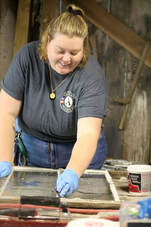 On July the 24th, 2020, a group of Preserve WV AmeriCorps members and local contractors met at Old Hemlock Foundation located in Preston County to participate in a historic wooden window restoration workshop with Smiths Family Workshop. Guided by the professional preservationists Jon and Derrick Smith, those in attendance worked on the windows from the house located on the Old Hemlock Foundation property that dates back to the early 1800s. Those in attendance learned how to safely remove the paint and glaze from the windows, how to fit new glass windows panes into the frames, and then how to glaze the panes back into the window. The benefits of work like this for Old Hemlock Foundation and other such historic sites are the increased energy efficiency, and windows can become more secure in the process. In addition to these things, particularly damaged windows can be made like new again, saving money and beautifying the building. The skills learned at the workshop are something I personally will take with me into future projects, as historic preservation is something I am passionate about and would love to pursue a job in. I think this is something that can also be said about the other attendants. As such this workshop was invaluable to those in attendance and also to Old Hemlock. Jamie BillmanJamie Billman served as the Preserve WV AmeriCorps member at the Old Hemlock Foundation during the 2019-2020 program year. My time as an AmeriCorps member at the Pocahontas County Opera House has given me the opportunity to flex my social media muscles again. I graduated from Shepherd University in Shepherdstown, West Virginia, with a degree in English and minors in communication and history. Within my paths of study, I focused heavily on written communication, whether that was online, like social media, or in print, like journalism. I found myself fascinated by how people communicate with one another online. We are all looking to be entertained, to be thought of, and to be involved with the communities that we love. Social media is a great tool to use, but as I began learning about social media, I was overwhelmed with all of the different tips and tricks that were taught to me online, through my professor, through other students, and through internships. Each place had a different answer for what you should be doing online. On top of everyone’s advice, social media best practices are constantly changing because of tweaks to social media algorithms and the whims of the audiences that businesses are trying to reach. After some experimentation throughout my time as an AmeriCorps, through my time at university, and my time in internships, I found some things that made a major difference in how many people saw my organic content (content that I had created myself). Here is what I learned worked to reach a larger audience: 1. Have a mission What do you want your efforts with social media to do for your business or nonprofit? Do you want to bring in more visitors? Do you want to increase sales of merchandise? Think of these goals ahead of time and create your content with this goal in mind. 2. Develop a social media plan for your social media efforts Having a plan typed out for your social media use is an important step. It doesn’t have to be too complicated. A plan, even a simple one, will help make guidelines to follow if you have multiple people running social media, and it also will help you create content more easily than if you were working from scratch every time. It doesn’t have to be extensive; for example, at the Opera House, we have a few categories that we can draw from for social media, which include pre-show posts, post-show posts, historical posts, and behind the scenes posts. This allows us to pick a category and draw inspiration from there, rather than starting from ground zero. You can also include measurable goals you want to reach in terms of analytics or sales and this plan will help you measure your social media progress. You can use the questions in the graphic above to get started. 3. Keep your branding consistent across platforms Brand recognition is important for your business or nonprofit. You want people to recognize your logo and your name, so keeping your logo and your handle consistent across all of your social platforms is important. For example, the Opera House’s website, Facebook, and Instagram is all pocahontasoperahouse (.org), and our Twitter is @pcoperahouse because of Twitter’s unique character limit on handles. Our profile pictures are always the same and our name is always Pocahontas County Opera House (see above photo). This comes in handy when someone from one platform searches for the Opera House on a different platform, as they can easily find us and our content. 4. Be consistent Be consistent with your posting. Try to post regularly without detracting from the quality. It is better to post higher quality content less frequently than lower quality content more frequently. Keeping up consistent posting of great content should help your page begin to grow. If your posting is less consistent, you will lose momentum on your page growth. 5. Always include a picture Across all social media platforms that we use at the Pocahontas County Opera House—Twitter, Facebook, and Instagram—posts with a photo always do better than posts without a photo. People tend to engage with the content more, share it more, and overall enjoy it more. 6. Avoid links as much as possible on Facebook Facebook is one of the best platforms for businesses. Facebook is a highly used social media platform and has a significantly diverse demographic on the site compared to others, like Instagram or Pinterest. However, because Facebook makes its money from advertising, links and events typically perform worse than content without links. I have suspicions that this is because Facebook wants businesses to pay for advertising, but I am not sure. I can, however, assure you that every post I have made that includes a link has gotten a fraction of the views and shares that a post with only an image does. This is also true for events. 7. Use hashtags Hashtags are one of those social media discussions that always seems to be changing. No one seems to know quite how many to use, what hashtags are helpful, and when to use them. I recommend using them every post on Instagram, and also on Twitter when you can within your character limit. Hashtags are critical for reaching new audiences on Instagram and can help drive engagement with your page. Try out hashtags on every post, and see which hashtags are the most effective. I always recommend having a branded hashtag, one that matches your branding, so that people can use it when discussing your business or nonprofit. 8. Have fun I know this sounds cheesy, but you will come up with better content if you find someone who genuinely enjoys creating the content for your page. This will make having more consistent content easier, and the enjoyment will hopefully spill over to your audience in the long run as your page has more and more genuine content. Overall, social media is a great tool to use when you want to reach your current audience and potential audiences. Businesses and nonprofits can share genuine content that helps their audiences stay connected, and overall, build fonder feelings towards the business. This is great for community building, and for helping people come back over and over throughout the years. Marilyn CreagerMarilyn Creager served as Preserve WV AmeriCorps member during the 2019-2020 program year at the Pocahontas County Opera House in Marlinton, WV. 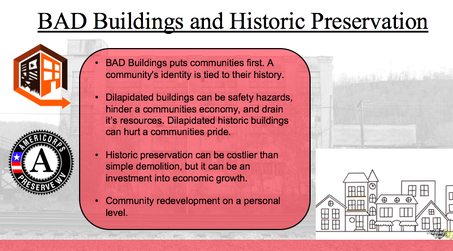 In the spring semester of 2019, Jennifer Thornton, an assistant professor of public history at West Virginia University, contacted Nicole Dias of BAD Buildings and the Northern WV Brownfields Assistance Center and asked her if she would like to give a guest lecture to her historic preservation class. Nicole agreed and included me, the Preserve WV AmeriCorps member serving at BAD Buildings, into the project. We created a presentation on BAD Buildings and our work with abandoned school buildings across the state. The guest lecture went over well with both Professor Thornton and her students. For the rest of the semester Jennifer and her students remained in contact with us, sending us questions and information about abandoned schools they did projects on. With the success of our first guest lecture, in January 2020, Professor Thornton contacted Nicole and I to do another guest lecture for her spring 2020 historic preservation class. We scheduled the guest lecture to take place in April. With the outbreak of the COVID-19 pandemic, the plans for the guest lecture seemed uncertain. However, Jennifer Thorrnton assured us that the guest lecture will go on as planned, except it would be done through zoom. We would be able to share our presentations through screen share and talk to the students. Nicole and I split the guest lecture into two parts. Nicole would give the basics of the BAD Buildings program while I would give the basics of the Preserve WV AmeriCorps program and how historic preservation is connected to BAD Buildings. Since this is my last year as a Preserve WV AmeriCorps member, I wanted to share my experiences with the class and encourage them to look into becoming a Preserve WV AmeriCorps member post graduation. Additionally, Nicole and I wanted to give the students a lesson that lets them know that historic preservation is not only important for history, it is important for a community's redevelopment. There are a lot of benefits to historic preservation and we wanted to share them with the students to encourage them to continue this path in their professional careers. Despite not having given a lecture through zoom before, thankfully our guest lecture was a success without any technical errors during the presentations. The students were well behaved and Professor Thornton added insightful comments. At the end, several students asked questions indicating that they were engaged with the lecture despite the circumstances. Unfortunately, at the very end of the guest lecture the zoom audio started to malfunction so we had to call the class to a close. The next day, Professor Thornton thanked us again through email and told us, “I was worried that with the COVID-19 quarantine the students would miss out on the guest lectures. I appreciate that you were committed to making it work despite these challenges!” It was great to work with Professor Thornton again and share our experiences with a new group of students. SUMMER PHILLIPSSummer Phillips is the Preserve WV AmeriCorps service member with the BAD Buildings program at the Northern WV Brownfields Assistance Center. She began her service in 2018 and it will conclude in August 2020. |
Preserve WV StoriesCategories
All
Archives
August 2023
|
Get Involved |
Programs |
Contact UsPreservation Alliance of West Virginia
421 Davis Avenue, #4 | Elkins, WV 26241 Email: [email protected] Phone: 304-345-6005 |
Organizational Partners:
© COPYRIGHT 2022 - PRESERVATION ALLIANCE OF WEST VIRGINIA. ALL RIGHTS RESERVED.

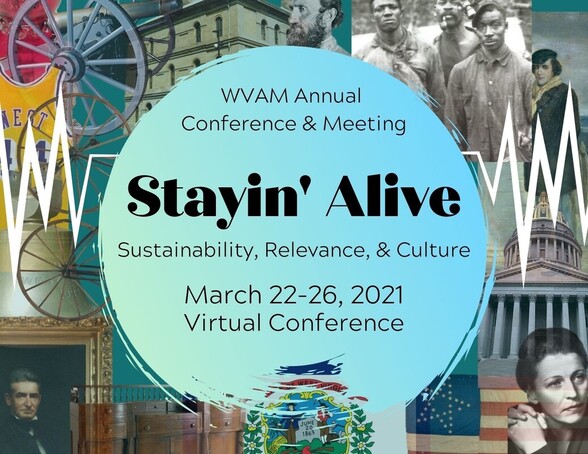
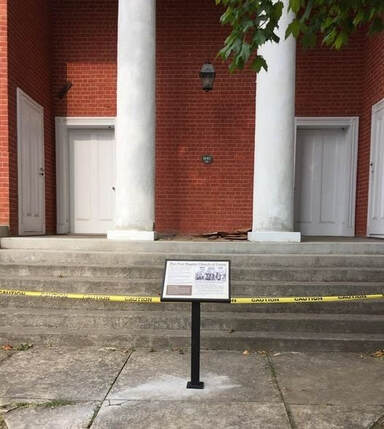
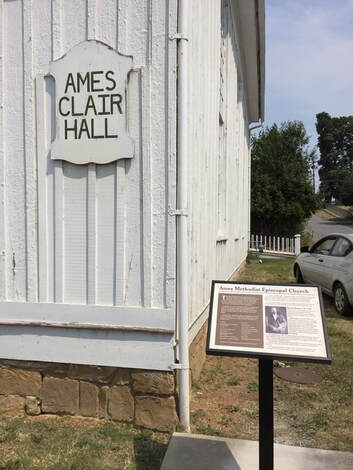
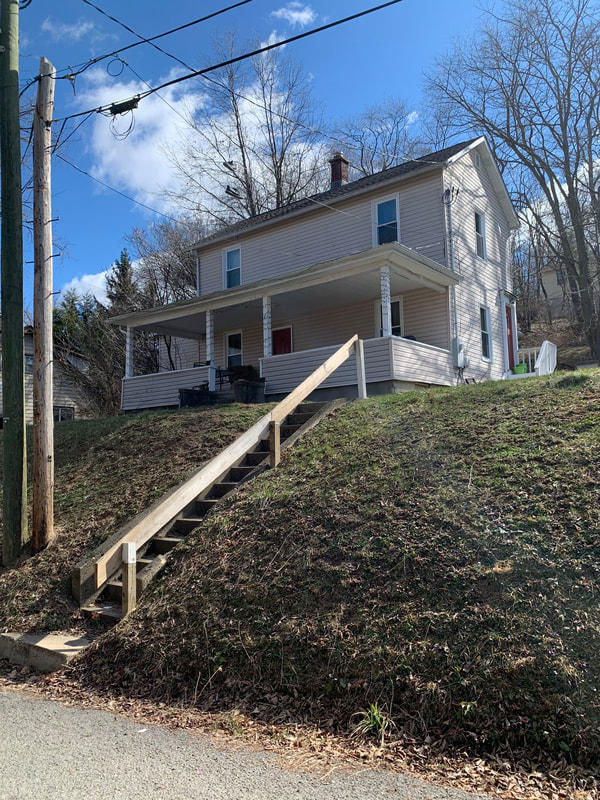
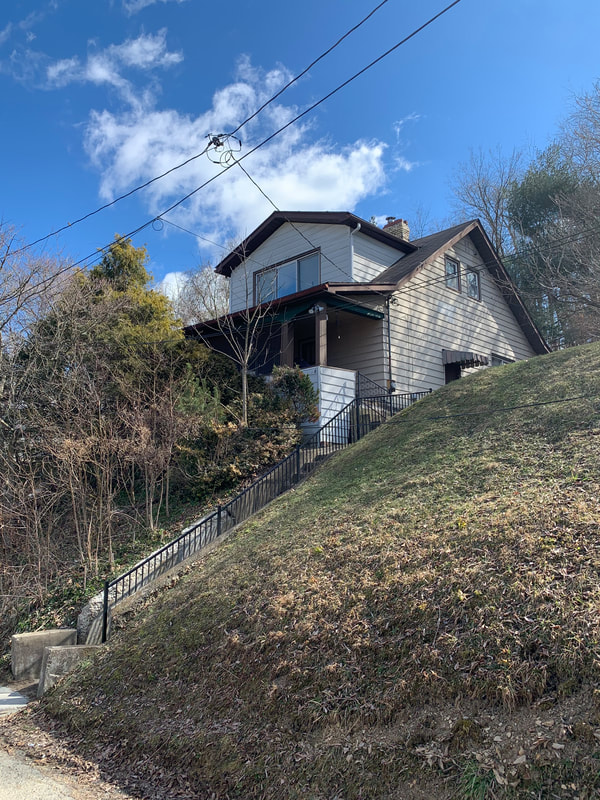
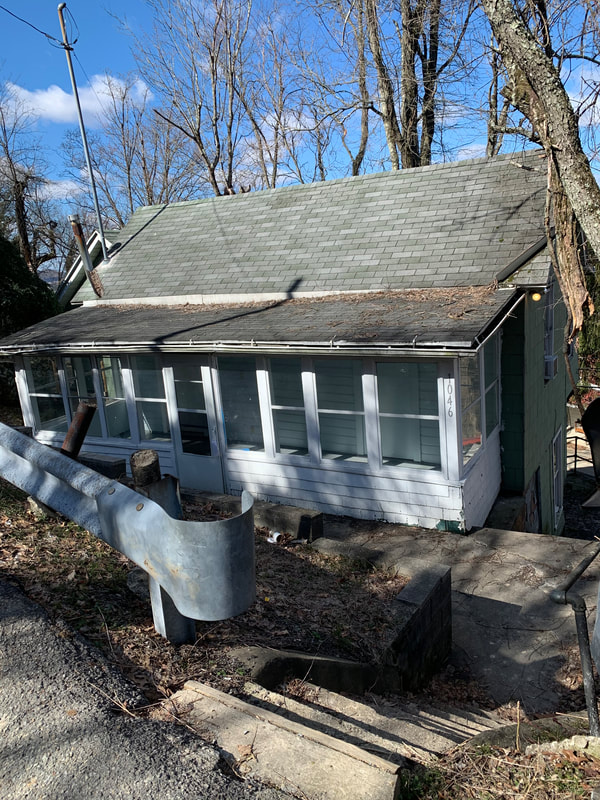
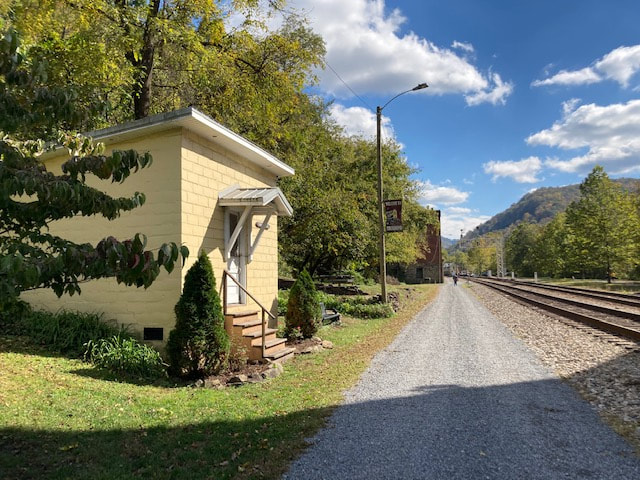
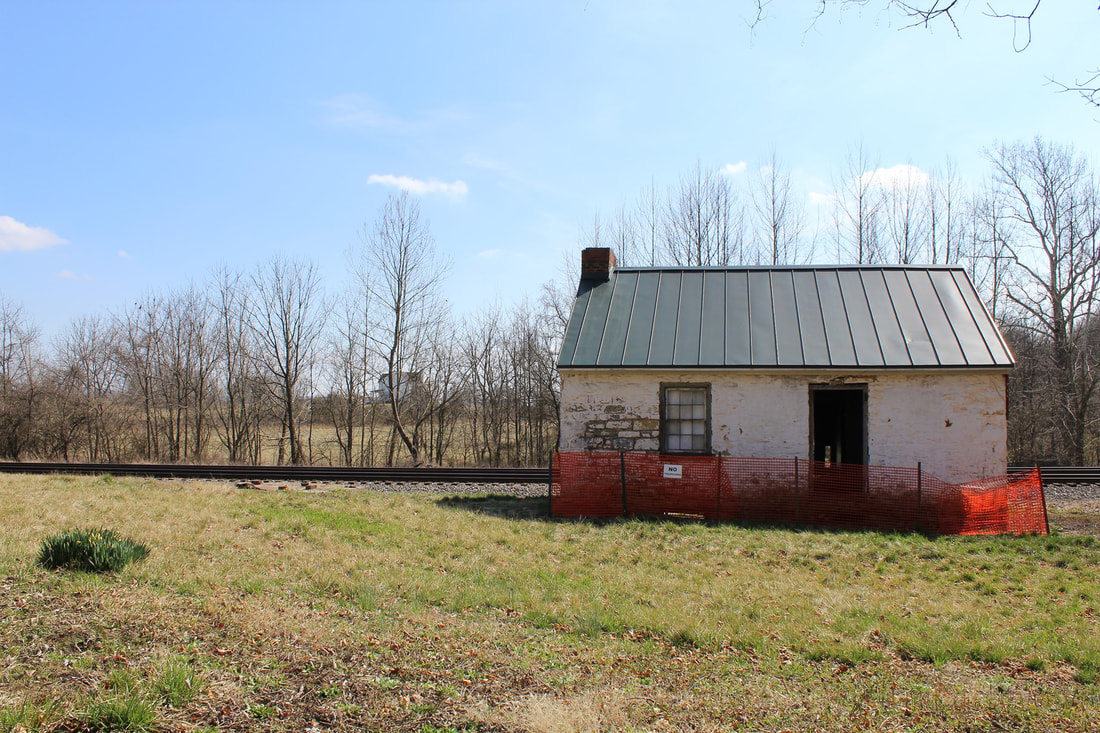
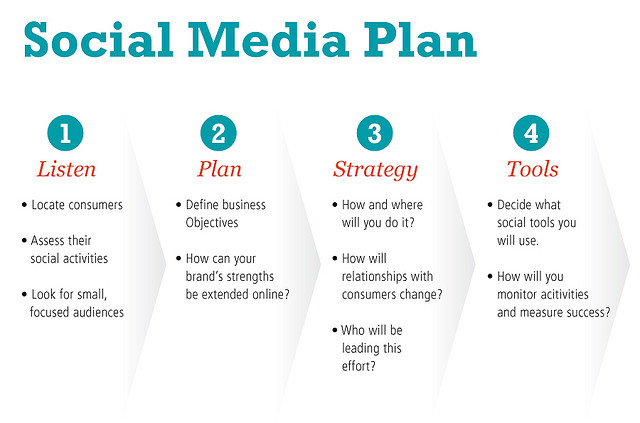
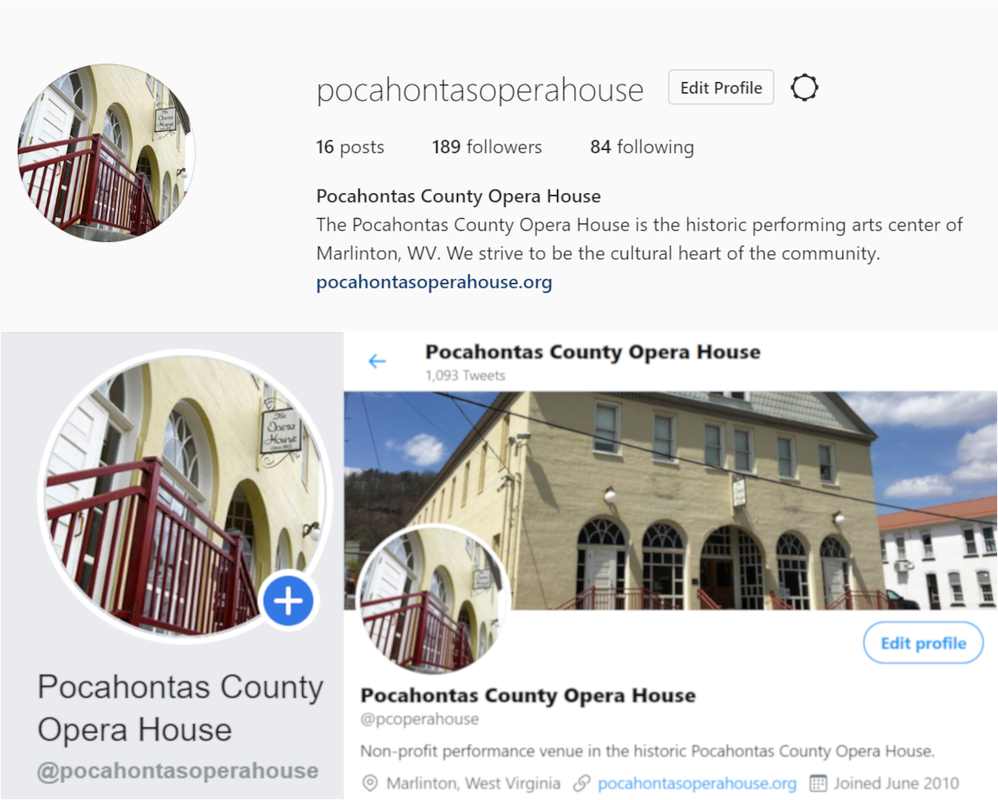
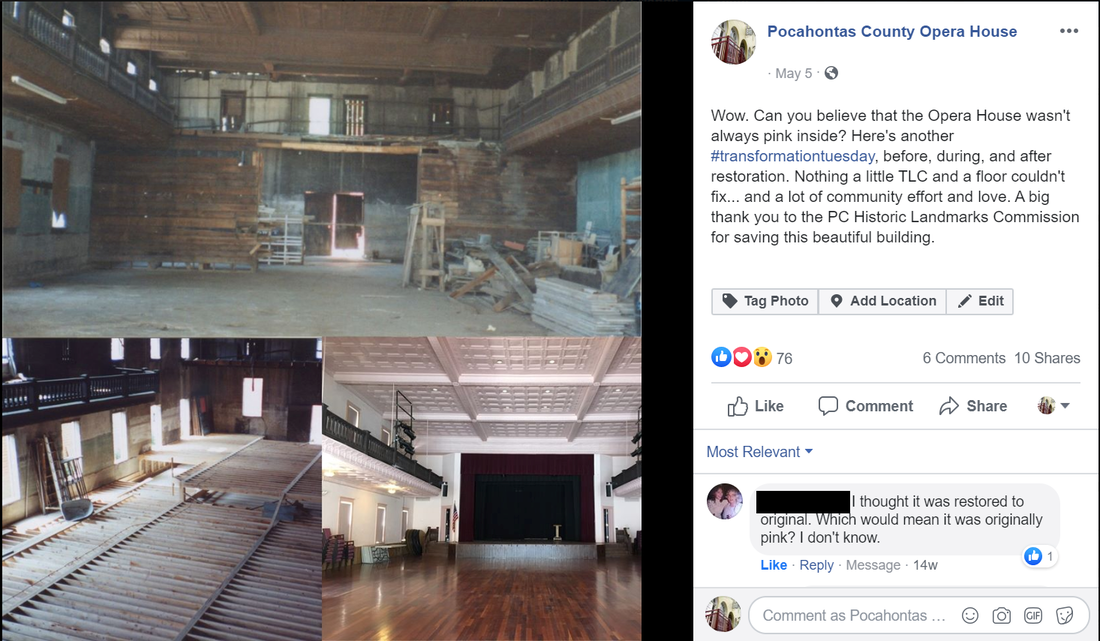
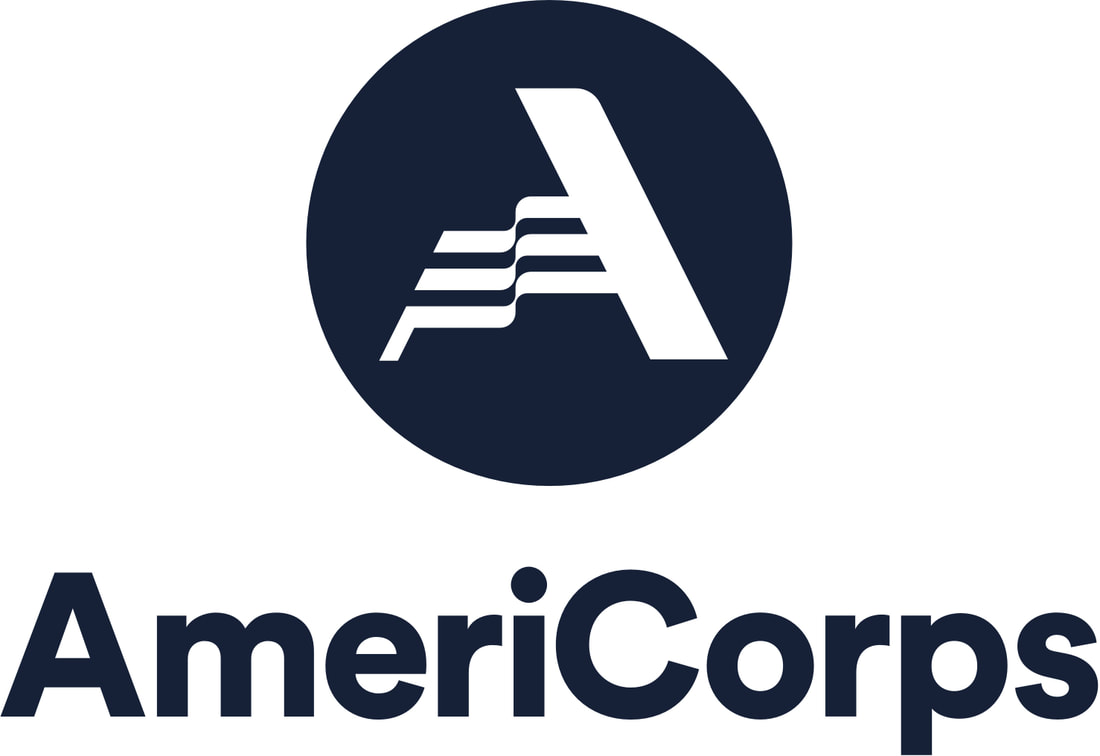
 RSS Feed
RSS Feed

